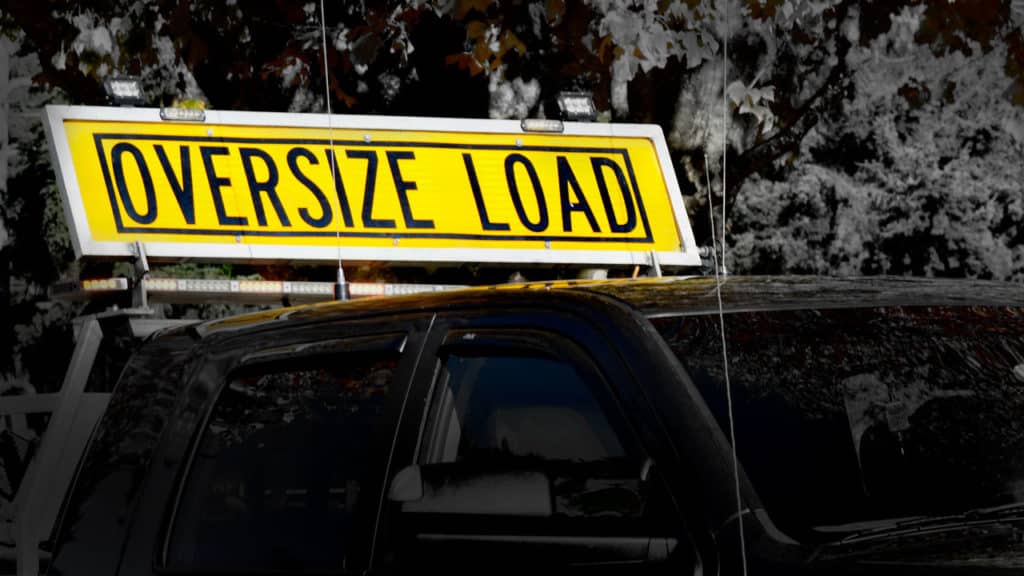What is a bridge strike?
When a vehicle or its load is too large to pass under a bridge, a bridge strike occurs. These strikes, or hits, result in millions of dollars in infrastructure damage each year and can be hazardous—even fatal—for those responsible for the collision, other drivers on the road, or bystanders.
Our country’s infrastructure is aging. Many bridges were built more than a half-century ago, to accommodate the shorter vehicles of the time. But even new construction is vulnerable to bridge hits caused by inattentive or unprepared drivers.
When done without proper training, permitting, and safety measures, the transportation of oversize loads such as wind turbines, construction equipment, and manufactured homes puts everyone on the road at risk. “What we’ve seen over the course of the years is that more accidents are taking place involving oversize or overweight transportation,” says Danny Wells, retired Permits Unit Manager with the Colorado Department of Transportation.
“Part of this we can chalk up to an increased quantity of loads. We can also add to the fact that these loads are getting bigger. The requirements of the customers using these freight shipments are getting larger. So, we have seen a number of cases where bridge strikes have occurred.”
Although many states do not keep a tally of bridge strikes, an informal survey taken by an American Association of State Highway and Transportation Officials working group found at least 3,000 nationwide between 2008 and 2018. A single bridge strike can result in hundreds of thousands to millions of dollars worth of damage, not to mention traffic delays, road closures, and long-term rerouting of traffic due to cleanup and repair.
A single bridge strike can result in hundreds of thousands to millions of dollars worth of damage, not to mention traffic delays, road closures, and long-term rerouting of traffic due to cleanup and repair.
So what do we do to solve this problem?
The use of pilot cars (also known as pilot or escort vehicles) when transporting oversize loads can help prevent such damages, says Wells.
Pilot/Escort Vehicle Operators (P/EVOs) guide oversize load drivers, double-check measurements, watch for hazards, and relay important information to drivers about potential problems. The presence of P/EVOs also alerts the motoring public to the presence of an oversize load.
“As a pilot car operator, our first and most important duty is protecting the traveling public,” says Patricia Auvil, pilot car operator and president of the Washington-based Northwest Pilot Car Association. “That is what we’re there for. And then it’s protecting the infrastructure, the roadway and the load itself, and of course ourselves. But to start with, we are a pre-warning device for the traveling public.”
As part of the “oversize load management team,” the P/EVO may also be responsible for carrying out pre-trip procedures. The P/EVO double-checks clearance height during the pre-trip survey to make sure the load can clear these structures.
Pilots are an essential part of making oversize load movement safer. As of today, only a handful of states require pilot car certification for vehicles assisting with the transport of an oversize load. “This is a trend that needs to change,” says Wells.
Is the use of pilot cars enough?
“This is a very specialized operation which requires specialized skill,” says Wells. Escorting an oversize load requires an advanced set of skills not taught in basic driver’s education classes.
“We’d recommend that states take a very close look at requiring certification for pilot escort vehicle operators,” he says. “It’s important that the operators of these vehicles have some training that involves traffic control, how to lead other vehicles away from imminent danger, how to lead a tractor-trailer through an area where the clearances may be minimal but enough, if operated correctly, to clear these structures and prevent possible injury to the motoring public.”
Certification ensures the pilot driver has the skills and knowledge necessary to comply with the law, guide an oversize load safely along its route, and deal effectively with emergencies. These skills can mean the difference between a successful trip and one that results in damages.
Setting a new standard for pilot car safety.
Evergreen Safety Council has produced curriculum that meets Washington and Colorado state pilot car certification standards, with more on the way. Twelve states currently have reciprocity agreements that honor PEV/O certifications granted in Washington and Colorado. States that have not yet adopted pilot car standards can do so easily, says Auvil, with minimal overhead cost because certification programs already exist. Evergreen Safety Council’s highly versatile curriculum can, with minimal modifications, accommodate state-specific roadway requirements.
Is this a problem in my state?
Find out if your state requires pilot car certification today by visiting our reciprocity page. We encourage you to support our mission of advocating for pilot car operator certification standards nationwide. Please contact your legislative representatives to request they establish these heightened safety requirements in your state.
Learn more about our industry-leading pilot car training.
You can visit our Pilot Car Certification program page to learn more about our nationally-recognized training. Our curriculum covers the latest federal, state, and industry standards and goes in-depth on the advanced knowledge P/EVOs need to prevent bridge hits and other catastrophes.
